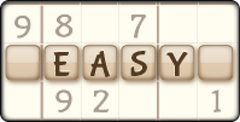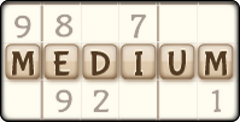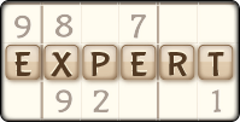How to Identify Hidden Pairs in Sudoku: Unlocking Advanced Strategies
There are a number of strategies that can help you in your Sudoku game. Hidden pairs is a crucial advanced technique in the game that can help you solve puzzles after exhausting all of the simpler strategies. Here is everything you need to know:

Understanding Hidden Pairs
A hidden pair occurs when two cells within a unit (row, column, or 3x3 box) contain the same two candidate numbers, and these numbers do not appear as candidates in any other cells within that unit. A hidden pair allows you to eliminate the other candidate numbers from the cells containing the pair, making the puzzle simpler.
As opposed to naked pairs, where the cells contain only the two paired numbers, the hidden pairs are hidden among the other candidate numbers. When you identify hidden pairs, it can result in breakthroughs to help you solve difficult Sudoku puzzles. Applying the logic that the two numbers in a hidden pair must go into these two cells, even if you do not know which number goes where yet, can be critical to your game.
Identifying Potential Candidates
To identify potential candidates, also known as pencil marking, is vital to finding hidden pairs and generally follows this process:
- Go through each empty cell in the Sudoku grid, making a note of all possible numbers that could legally fit. You then cross out numbers already present in the same row, column, or 3x3 box using small numbers or dots in the corners of the cells to represent the likely candidates.
- When doing this, you need to be meticulous and maintain your focus because missing a candidate can mean overlooking hidden pairs.
- As soon as you solve parts of the puzzle, you should update your pencil marks accordingly. Whether you are using our Sudoku platform or doing it manually, make sure that you develop your own approach to marking the candidates down, and on our Sudoku platform, you just need to click on the pencil to go into note-taking mode.
Analyzing Rows, Columns, and Boxes
Once you have pencil-marked the grid, the next step is to analyze each unit for hidden pairs, which you do in the following ways:
- Examining each row, column, and 3x3 box individually.
- Paying attention to frequency by looking for numbers that appear as candidates in only two cells within a unit.
- Learn to train your eye so you can spot pairs of numbers that occur together in just two cells, and then cross-reference by checking if the potential pair is truly hidden by making sure these numbers do not appear elsewhere in the unit.
Remember, a hidden pair can exist simultaneously in different units, such as a row and a box, so be sure to take your time and be diligent in your observation, particularly when you're doing harder puzzles.
Applying the Hidden Pair Technique
Once you have identified a hidden pair, you need to do the following:
- Double-check the pair is hidden and officially confined to two cells in the unit.
- Remove all the other candidate numbers from the two cells that contain the hidden pair.
- Undergo your own process of logical deduction and understand that one of the cells must contain one number of the pair, and the other cell contains the other number.
- After you apply the technique, look for any immediate consequences in the puzzle, for example, newly revealed single candidates.
- When you're solving on paper, update your pencil marks to reflect the new information in case you mistakenly go back over the cells.
After you apply the technique, you then look at the puzzle again because new hidden pairs or other patterns may emerge.
Common Mistakes to Avoid
When we are aware of the more common pitfalls, we can apply the hidden pair technique with great effect. Consider the following:
- Be sure not to confuse hidden pairs with naked pairs or other common Sudoku patterns.
- Avoid the temptation to stop searching after finding one hidden pair within a unit.
- Don't assume a pair is hidden without thoroughly checking all the cells within the unit.
- Update your pencil marks as soon as you can, as failing to do this after making progress in the game can result in some missed opportunities.
- Take your time to analyze the grids, as rushing can result in overlooked hidden pairs, particularly when you're playing against the clock.
Additionally, don't just focus on hidden pairs because there are a number of solving techniques. If you're trying to nail down this approach, that is fine, but be aware that there is more than one way to skin a cat!
Practice Examples
Just to make sure you know how to understand hidden pairs, here's a couple of scenarios to bear in mind:
- One simple example is in a row with cells containing (1,2,3,4), (2,3,4,5), (1,2,5,6), (1,4,5,6), (3,4,6,7), (6,7,8,9). The numbers 2 and 5 will form a hidden pair in the second and third cells.
- In a more complex puzzle, in a 3x3 box, if two cells contain (1,2,3,4,5) and (1,2,3,4,6), and the numbers 1 and 2 do not appear as candidates in any other cells of the box, they form a hidden pair.
Integrating with Other Strategies
Hidden pairs are a really powerful technique by themselves, but when you integrate them with other Sudoku strategies, this can result in breakthroughs in your game, even in the most challenging puzzles. Here's a number of strategies to bear in mind:
Naked Pairs or Triples
Hidden pairs and naked pairs become complementary techniques. If you identify a hidden pair, you can scan the same unit for naked pairs that may have been created as a result.
The X-Wing Technique
Hidden pairs can form the basis for X-wing patterns, where you look for hidden pairs of the same numbers in two different rows or columns.
The Swordfish Technique
Like hidden pairs, the Swordfish technique involves looking for patterns of candidate numbers across multiple units where you use your hidden pair recognition skills to spot potential swordfish configurations.
The XY-Wing Technique
Where hidden pairs often form part of this structure. Be sure to look for cells that could be part of a hidden pair but also connect to a third cell in an XY-wing pattern.
There are many more, but these can get you started.
Tips for Mastering Hidden Pairs
If you truly want to excel at this technique, consider the following:
- Practice mentally scanning for patterns without pencil marks, as this can improve your visual recognition.
- Gradually increase the difficulty of the puzzles you solve to challenge your hidden pair recognition skills.
- Study how expert Sudoku solvers identify and use hidden pairs in complex puzzles.
- Analyze your mistakes when you miss a hidden pair.
- Regular practice! Solving Sudoku puzzles on a regular basis can do a lot for your skills in the game and mentally. By expanding your knowledge and practice of hidden pairs, you will significantly enhance your Sudoku-solving abilities with greater confidence and mastery.
Sudoku Levels
Seasonal Sudoku Games
More Games
Sudoku News
Disclaimer
DISCLAIMER: The games on this website are using PLAY (fake) money. No payouts will be awarded, there are no "winnings", as all games represented by 247 Games LLC are free to play. Play strictly for fun.





































